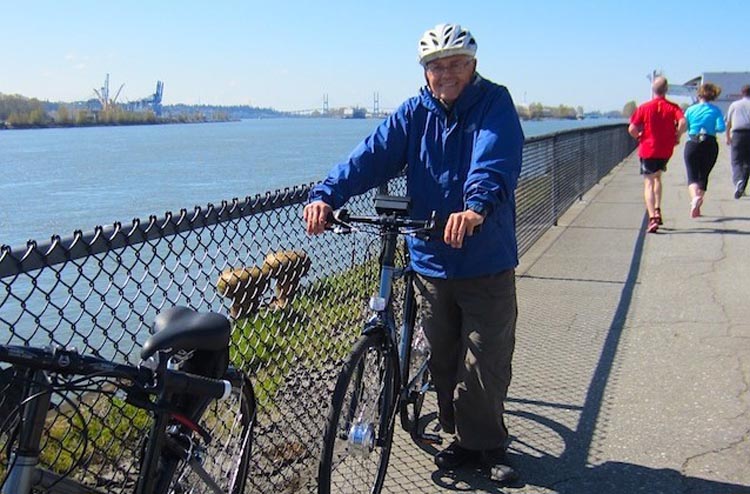
How to Use an Ebike to Start Cycling Again after Knee Replacement Surgery
If you are scheduled to have total knee replacement surgery, one of the most common questions cyclists ask is: can I still ride a bike after the surgery? The short answer is yes. In fact, riding a bike is actually a great form of physical therapy following knee replacement surgery. And if you have an ebike, the options are even brighter, because you can control the amount of stress you place on your knees.
For many people, knee replacement is a sensible option. If you are suffering from pain and stiffness due to arthritis, it can interfere with your daily activities. Total knee replacement is also known as total knee arthroplasty. is a beneficial option for treating the pain, stiffness, and loss of mobility that is associated with knee arthritis.
Once you’ve had your knee replacement surgery, here are a few recovery tips to help you prepare to get back on your ebike.
How to Use an Ebike to Start Cycling Again after Knee Replacement Surgery
Yes, you CAN get back to cycling after knee replacement surgery!
Getting Started: Passive Range of Motion
For the first couple of weeks, one of the main goals is decreasing the swelling and achieving a full passive range of motion. So, you need to be prepared to work on this. Being able to cycle after total knee replacement depends on getting your entire body back in motion as quickly as possible after the surgery.
Even if your knee pain limited your activities before the surgery, you will need to work hard afterward to get your knee back to where it was before.
ebikes
Physical Therapy and Becoming Active
One of the most important factors of rehabilitation following knee replacement surgery is physical therapy. Usually, within 24 hours after surgery, a physical therapist will visit. Your physical therapist will help you stand, sit, walk, and use a continuous passive motion machine.
During the early stages of your physical therapy, you will experience a certain level of discomfort, stiffness, and pain, but it is important to focus on the outcome. To succeed in getting back to cycling, you must follow the advice of your physical therapist and become active as quickly as possible. Most rehab centers won’t allow you to go home until you can climb the stairs and walk, so the faster you get yourself active, the sooner you will be back to cycling.
Working Your Way Up to Cycling with a Stationary Bike
Range of motion is a critical part of your recovery following total knee replacement surgery. The good news is that using a stationary bike during your physical therapy is a great way to improve range of motion. And using a stationary bike will also prepare you to get back on your bicycle.
It is important that you check with your doctor and your physical therapist to find out when you can start using a stationary bicycle. Be sure to set the seat height appropriately. Your knee should be straight down and resting on the pedal, with only a slight bend in your knee. Start out slowly and keep in mind that you may not be able to turn the cranks all the way around. Slowly pedal forward and backward for a few minutes. Continue this routine until your range of motion improves, which often happens quite quickly.
Achieving Full Range of Motion
When your knee is able to bend about 90 degrees, you should be able to turn the cranks fully around on your stationary bicycle. Once you can complete a full revolution, consider adding light resistance to help improve the endurance and strength of your muscles. If you start feeling pain in your knee, decrease the resistance.
In most situations, you can begin riding a stationary bike about two weeks after your knee replacement surgery.
Advancing to Outdoor Cycling
And after about six weeks of riding a stationary bike, your doctor may clear you to start riding your bicycle outdoors. It is important that your doctor clear you before you begin riding outdoors. Once you start cycling outdoors, take it carefully and slowly, and always stop if you feel pain. Most ebikes allow you to control the amount of electric assistance you use. Start off with the highest level of assistance, and an easy gear. This will enable you to ensure that you don’t stress your knees. As you progress, you can gradually decrease the level of assistance.

